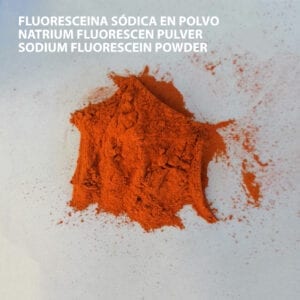Fluorescence is the phenomenon whereby some products or substances emit energy in the form of light when irradiated with ultraviolet light. Fluorescence should not be confused with phosphorescence. In phosphorescence, the particles store the energy and then radiate it after the ultraviolet light irradiation has been completed.
To really understand the fluorescence process, it is necessary to remember the atomic orbital and molecular orbital model. According to the uncertainty principle, an electron can be found within a certain energy level range, in a lower or higher level. There are low-energy and high-energy orbitals. Electrons by default prefer to occupy low-energy orbitals, but can transiently occupy higher energy levels.
These orbital jumps are achieved in certain substances by irradiating them with energy. These jumps are known as electronic transitions. Each type of atom has very characteristic absorption lines and emission lines.
Fluorescence applications
The phenomenon of fluorescence has many applications:
- In LightingFluorescent tube: The operation of the fluorescent tube, so ubiquitous in homes and offices, depends on fluorescence. Inside the glass tube there is a partial vacuum and a small amount of mercury. An electrical discharge in the tube causes the mercury atoms to emit light. The light emitted is in the ultraviolet (UV) range, and is therefore invisible to our eyes; but the tube is coated with a layer of a fluorescent material called phosphor, which absorbs ultraviolet light and re-emits it in the visible spectrum.
- Analytical chemistry for laboratory techniques for the detection
- Biochemistry and medicineBiomolecules can be labelled with a fluorescent chemical group (fluorochrome) by a simple chemical reaction, allowing sensitive and quantitative detection of the molecule.
- Gemologymineralogy, mineralogy, geology and forensic sciences
- Another application of this phenomenon is in the differentiation of counterfeit notes The printing of these is done with fluorescent ink, which is visible in ultraviolet light.
- Fluorescence water assessment in hydrology.
Fluorescent materials. Fluorescent Stones and Minerals
- An example of such substances is the fluorescein sodiuma compound belonging to the xanthine family. You can see in the experiment section, in the experiment, making fluorescent water, how diluted in water it has a yellow colour. When it is in solutions of pH greater than 7 (for example by adding a few drops of ammonia to the water), it turns green, and its fluorescence increases.
- Precious stones: They have fluorspar in their crystalline structures if they are not too pure.
- Amber: They show orange-coloured radiation when receiving short-wave ultraviolet light.
- Hope diamonds and rubies: They exhibit red radiation when irradiated with short-wave ultraviolet radiation.
- Minerals: In many cases it is due to the fact that fluorite or a derivative of fluorite is present. In this picture you can see some fluorescent minerals, the main ones being the following:
- Fluorite: It is the basis for most of the fluorescent elements, it presents different colour variations in the radiations, such as green, blue or pink.
- Calcite: Similar properties to fluorite, hence its properties. It tends to emit light in pink colours.
- Uranium: This mineral has a greenish radiation due to the fact that it is a radioactive material.
- Organic materials: They mainly owe their fluorescence to the mineral compounds that form them together with organic matter. The main examples are:
- Mycena Lux-coeli fungus. It is believed that they acquire this property to attract insects to carry out spore dispersal.
- Chlorophyll: The chlorophyll present in the leaves of plants takes the sun's energy to carry out photosynthesis, and part of this energy must be dissipated in order not to damage the leaf. Part is dissipated as heat and part in the form of fluorescence. It is usually green in colour.
Fluorescence in sodium fluorescein
Sodium fluorescein is one of the substances, within the chemical products, which have the property of fluorescence and are among the most widely used, given their ease of transport and their stability. Sodium fluorescein is used both for medical purposes for ocular detection and in the hydrological field for the detection of leaks and traces in aquatic areas.
The emission of sodium fluorescein is highest at pH 8 and at a wavelength of around 550nm. In this image you can see the emission-excitation graph of sodium fluorescein.

